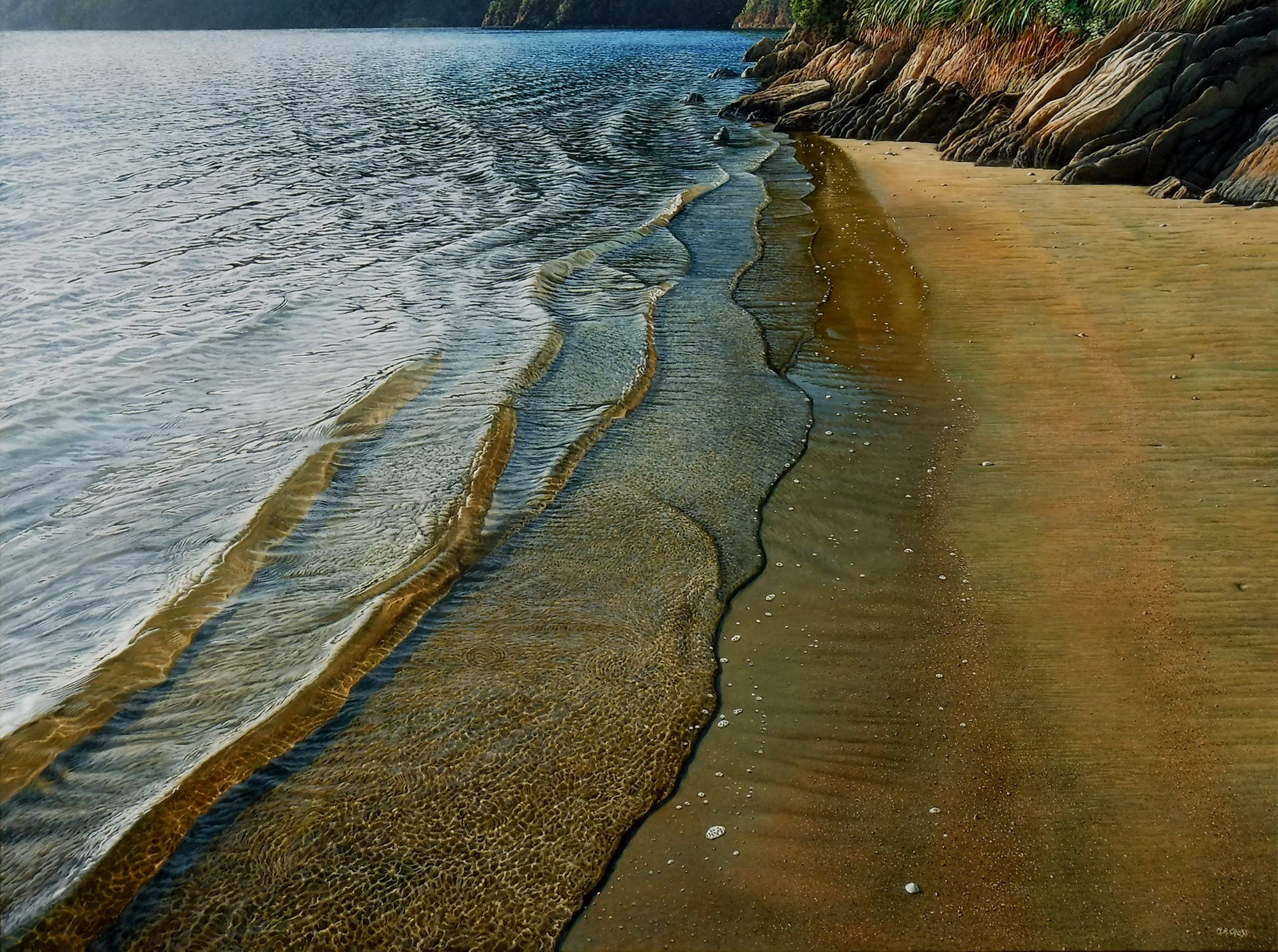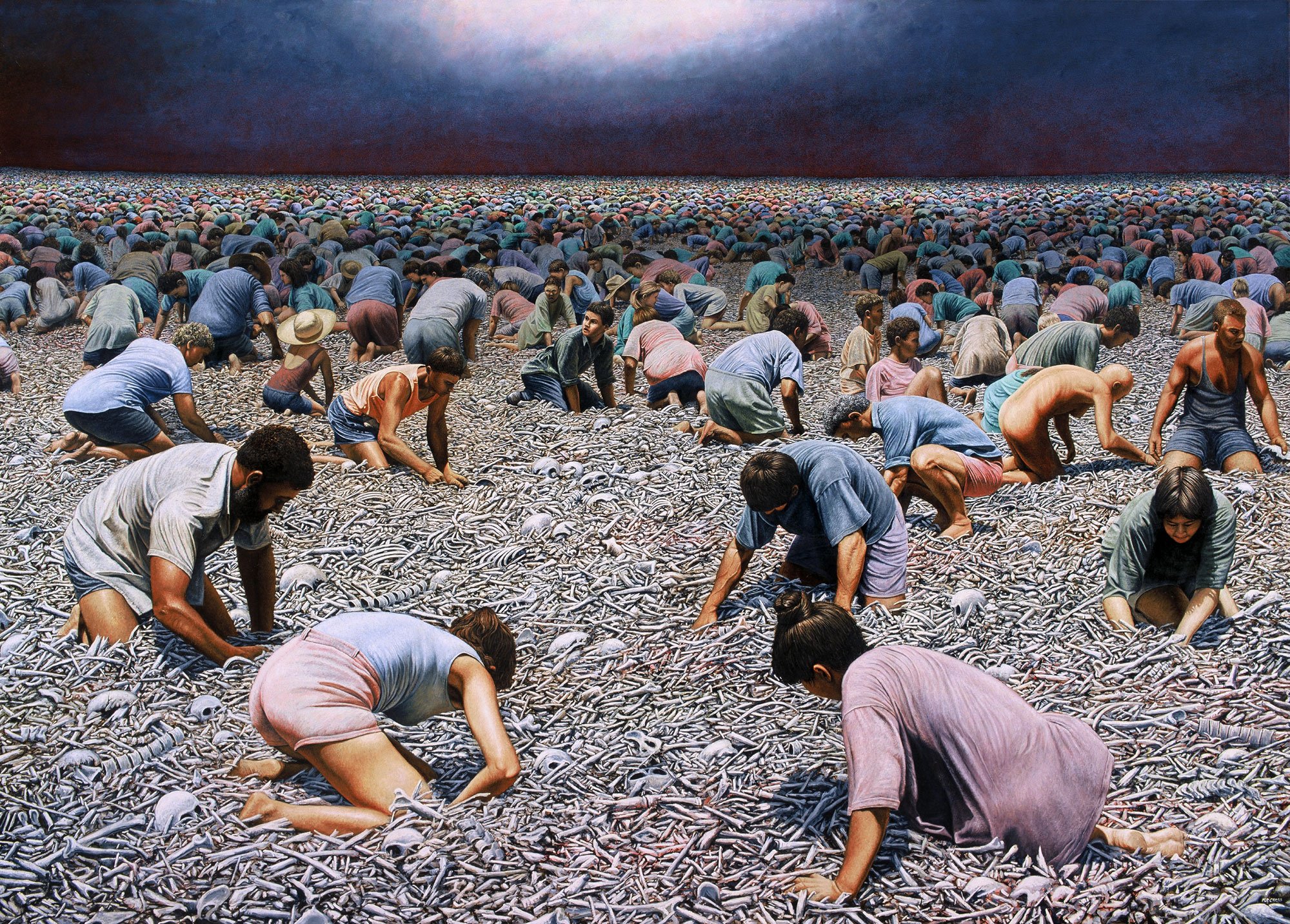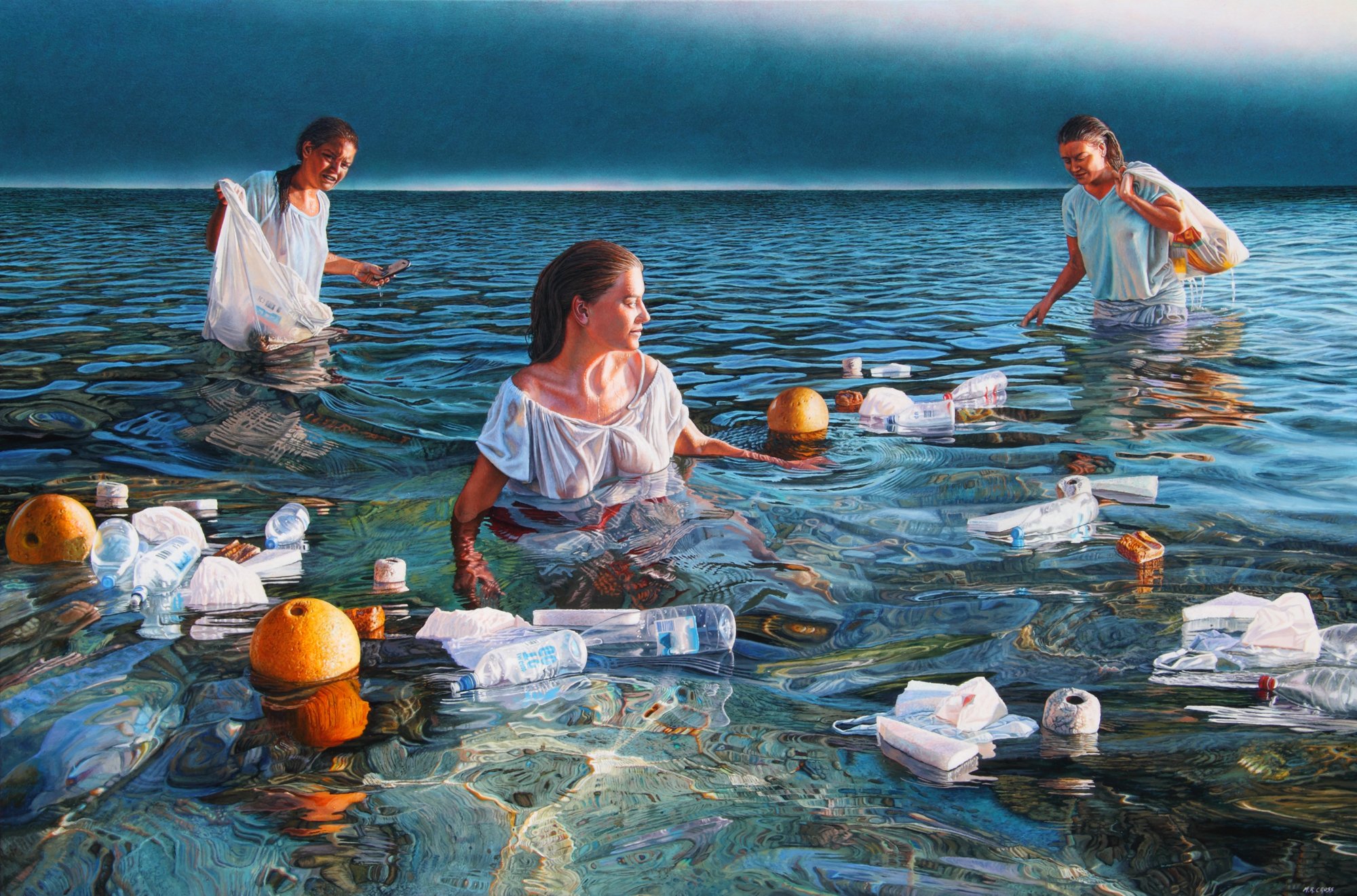Interview with Mark Cross

“As I compose these words, I am finalizing the last details for an upcoming exhibition in New Zealand. At the age of 69, I anticipate that this will likely mark my final solo exhibition, although I intend to persist in painting and contributing to collective showcases.“
How did your early background as a precision engineer influence or intersect with your deep interest in art history and oil painting?
The intersection of my engineering experience with my development as an artist occurred when I was 16, driven by a profound dissatisfaction with the confines of traditional schooling and a fervent longing for freedom from institutionalization. In 1970s New Zealand, possessing commendable academic achievements afforded me the opportunity to pursue hands-on, tactile training in manufacturing tool engineering. This endeavor not only provided me with a means of income but also granted me a semblance of independence.
Throughout the four years of tertiary education, I gleaned a fundamental understanding of the importance of process. It became evident that commencing with a blueprint necessitated forward-thinking, anticipating numerous steps ahead to attain the desired outcome. This cognitive approach, coupled with a gradual comprehension of the nuances of oil painting, has fundamentally shaped my personal painting technique.
Working within the exceedingly precise parameters of manufacturing, where tolerances often ranged within plus or minus one thousandth of an inch, likely contributed to my later evolution toward realism. However, the roots of this inclination can be traced back to my formative years in childhood.
Could you share insights into the philosophic and stylistic foundation that was established during your early years in Liku, on the island of Niue, and how it has shaped your career as an artist?
First, let's begin with my childhood. From my earliest school days, I had the opportunity to escape the burgeoning urban sprawl of Auckland during summer vacations, as my parents would take us camping on the outskirts of the secluded Kaipara Harbour, situated 100 kilometers north of Auckland. As a five-year-old, I found myself immersed in this unspoiled wilderness, where I reveled in the freedom of catching fish and observing the intricacies of nature.
Those summer days of unrestricted exploration and self-sufficiency left a profound impact on me. Thus, when I eventually relocated to Niue with my young family at the age of 23, I found myself transported back to those carefree days of summer. This afforded me the opportunity to contemplate and clarify my objectives. It dawned on me that residing in Niue, due to its isolation, compelled artists to transcend their individual identities and contemplate the broader scope of humanity and the Earth itself. The island served as a microcosm of our planet.
In what ways has your self-education and work on the 'periphery' of the mainstream art industry contributed to your artistic development?
I have never quite fit into the Art Industry as it exists today. It's as if I've inhabited a parallel universe to it. While many art dealers have expressed interest in representing me, they have often fallen short for various reasons. The overarching issue is that the art industry sometimes fails to recognize the potential of self-educated artists. From my perspective, art dealers often perceive themselves as employers of artists, when in fact, the relationship should be symbiotic, benefiting everyone involved. This necessitates that art dealers understand the artist's vision, rather than simply hanging the art on the wall and expecting it to sell itself to the audience. Due to this disconnect, I've adopted the mindset that if they are unwilling to grasp the essence of the work and convey that understanding to the audience, I might as well take matters into my own hands. With the advent of the internet, the commercial dynamics of the art world are evolving, much like they have throughout Western art history, reducing the reliance on overrated and narrowly focused intermediaries.
How has the unique environment of Niue, with its isolation and natural surroundings, influenced the themes and subjects in your paintings over time?
The influence on my painting is primarily rooted in my close relationship with nature here in Niue, which perpetuates my unique perspective on the world. I refer to this perspective as discovering divinity in the minutiae, devoid of any religious connotation. I extend this approach to my art regardless of my location, resulting in elements of Hawaii, Mykonos, Switzerland, New Zealand, Rarotonga, Aitutaki, Delos, Tibet, and other locales manifesting themselves in my work. It is worth noting that Niue's crystal-clear waters, characterized by their reflective properties, refraction, and captivating caustics, consistently captivate and inspire me. Through these waters, I have gained a profound understanding of their physical dynamics, knowledge which I apply to depictions of water in various settings.
How would you describe the relationship between your paintings and the concept of freeze-frame movies, and what inspired you to create this unique narrative approach in your art?
Here, I am primarily discussing my earlier work, where in I crafted imagery of figures transposed into landscape "stages" to construct narratives often exploring human conditions and dysfunctions, albeit without providing definitive answers. The absence of answers mirrors the phenomenon of a phantom limb in an amputee. Moreover, the static nature of the image affords viewers an opportunity to introspect and interpret the underlying concepts for themselves. Should the viewer invest time in this process, the image transcends its static form, assuming a deeper significance. There is always an implicit suggestion of events unfolding beyond the confines of the frame—it's a matter of perception. Over the past decade, my artistic focus has shifted towards painting non-figurative "waterscapes." Yet, similar principles apply, although the narratives tend to be more abstract and often rely on the artwork's title as a guide to interpretation.
Do you have any specific rituals or emotional states that you find conducive to your painting process? How do you prepare yourself or set the mood before starting a painting session?
Before embarking on a painting, I often dedicate several years to contemplation and the accumulation of resource materials, predominantly photographs and written research, which may inform the artistic endeavor. Regarding the preparation for a painting session, I meticulously tend to my expansive vegetable gardens. Each morning, prior to breakfast, I typically traverse the garden to gather any produce that has ripened overnight. (In the event of an abundance of vegetables or fruits, my wife, Ahi, arranges for their sale at our small gallery in town.) Subsequently, I arrange the studio, ensuring suitable auditory accompaniment and confirming the functionality of anti-mosquito measures. Typically, a fresh canvas awaits on the easel for immediate attention; if not, it serves as an opportune moment to prepare the canvas for forthcoming work.
Could you provide insight into what we can expect from your upcoming exhibition?
I am thrilled to announce that I will be part of an upcoming exhibition at Boyd Dunlop Gallery, in collaboration with the talented artist Brent Wong. Together, we will showcase a series of paintings that reflect our journey in the art world.
Interestingly, Brent Wong and I have a long-standing association that dates back to our meeting at an Auckland art competition exhibition in 1984. Our relationship has been influential in shaping our artistic endeavors. Early on, Wong's minimal landscapes influenced my own reduction of elements in my landscapes, despite our differing realist styles. Surprisingly, our approach to the technical applications of paint to ground bore striking similarities.
Over the years, our art styles, subject matters, and practices have evolved divergently. However, our friendship remains strong, and we continue to take an interest in each other's work.
I invite you all to join us at the exhibition that will be open until April 30th, and I look forward to sharing this creative journey with you all.





